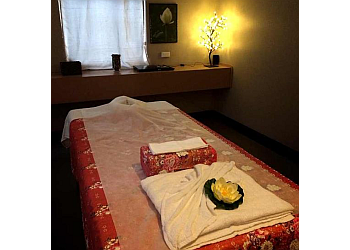
Tui Na (conventional title ) is an ancient healing system that has existed for centuries. It has been used from the islands of the Pacific for hundreds of years and is among the most well-known styles of acupuncture and herbal medicine. Tui Na is derived from Tuo Na, the Na name for the large palm tree found in tropical and subtropical climates all around the world. Tuo Na also indicates wind in Mandarin. The tree is named after this, since when the branches are twisted and bent to the desired shapes, small animals and birds frequently fall out of them for security. Some folks today believe this animal protection is joined to the power of the environment, therefore when the branches bend such as this, they’re protecting their power.
Tui Na is used in a really straightforward way as a Chinese medicinal massagetherapy. As part of the treatment, the practitioner may set the palms of both hands on the clove’s foundation, in the center, just beneath the eyelid, as if by flipping the bird. The professional will then start a straightforward yet powerful set of manipulation methods that will stimulate the body and promote healing. This treatment, Tui Na manipulation, is done on both sides with various methods, according to the state of the customer’s body.
In general, the professionals use five unique techniques to do Tui Na massage, depending on where the strain is applied, as well as who is doing the therapy. These approaches include Shiatsu, acupuncture, Moxibustion, Tai Chi Chuan, and Qigong. Shiatsu, or finger strain, is one of the most popular kinds of Tui Na, since the finger enables the practitioner to employ subtle manipulation, without touching directly, to connective tissue. Acupuncture has been shown to help Tui Na heal and prevent specific ailments. Moxibustion utilizes burning of certain herbs or nutritional supplements to stimulate and rejuvenate the Tui Na energy within the human body. Finally, Tai Chi Chuan, or kicking, is done using the legs.
Shiatsu has grown extremely popular among Western professionals of Tui Na, on account of the fact that the acupoints which are targeted are very precise. Some Westerners consider that Tui Na functions the identical manner Doctors do, by targeting specific points from the body that, when stimulated, launch chi. (The notion is, needless to say, that Chi has to flow through the entire body, not via a single point at one moment.) Acupuncturists utilize these specific Tui Na techniques along with other massage methods to promote overall recovery and well being.
There are also other Tui Na forms of recovery available. Acupuncture, for example, uses gentle pressure on specific meridians since it stimulates the proper Tui Na energy. Acupuncturists who perform this sort of bodywork are experts in identification and understanding the relationship between meridians and particular body parts. A Tui Na practitioner will help determine which meridian is malfunctioning and pinpoint a therapy procedure which will treat that specific area. Reflexology is just another form of Tui Na that employs the use of pressure directly on the feet or palms. Practitioners who focus on reflexology understand that there are 12 meridians along the feet and hands, each attached to a specific organ.
Reflexology along with other Tui Na techniques may be implemented by either using traditional Chinese medicine or even contemporary massage techniques. Chinese medicine focuses on the general health of an individual and Tui Na on the connection between organs and meridians. Chinese medicine, as an example, highlights the necessity of appropriate breathing to keep decent health and promotes the use of aromatherapy and herbal remedies. Massage therapists who incorporate Tui Na in their massage therapy instruction concentrate on the promotion of healing and relaxation, but also on the immediate application of pressure to specific areas. This is sometimes achieved with the hands, feet, or even the shoulders and elbows.
Tui Na and Chinese bodywork have received interest from western pros throughout the last few decades due to the persistent reports of the positive outcomes and fewer side effects compared to conventional medicine. But, there’s still some controversy surrounding the protection of Tui Na massage. 광명출장마사지 Some Tui Na experts believe that the beneficial outcomes come from stimulating the circulation of blood and the release of toxins through the stimulation of pressure points, but some prefer to determine the possible risks of exposing the body to increased levels of pressure. Among the most common side effects of getting Tui Na massage, according to some accounts, has become the creation of nodules in the skin brought on by the growth of internal stress.
Regardless of if Tui Na is used as part of traditional Chinese medication or as a free treatment, many practitioners believe that the techniques can be good for individuals of all ages. In reality, there are even clubs which have been established for people to undergo Tui Na in the privacy of their own homes. For these people, there are no drugs, no need for specific equipment or training, without a possibility of unwanted effects at all. People that are interested in undergoing Tui Na for their own can find information about where to buy authentic Chinese medicine publications or DVDs online or visit a local institution of higher education to get instruction on Tui Na. When combined with appropriate diet and lifestyle changes, Tui Na is a strong, effective treatment for chronic conditions and disorders of the musculoskeletal system, particularly those located in patients’ feet and legs.